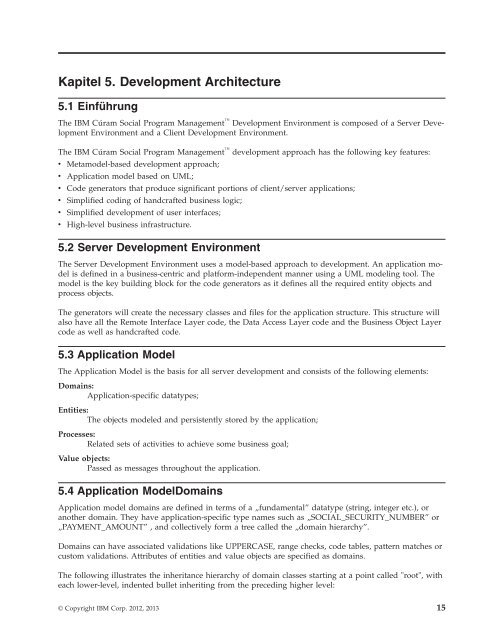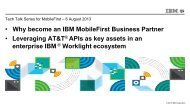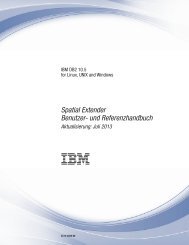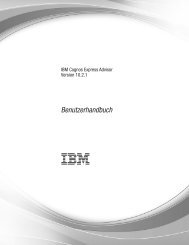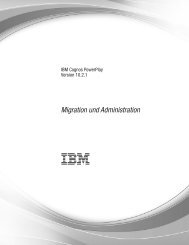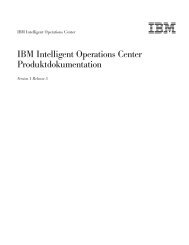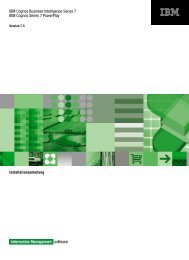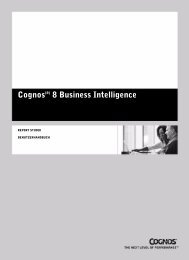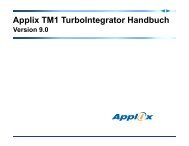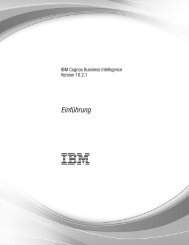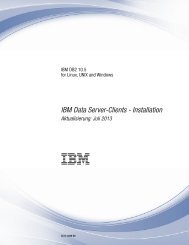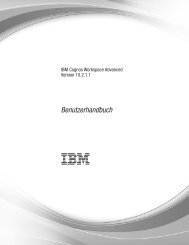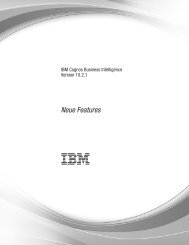IBM Cúram Social Program Management: Cúram Solution Architecture
IBM Cúram Social Program Management: Cúram Solution Architecture
IBM Cúram Social Program Management: Cúram Solution Architecture
Create successful ePaper yourself
Turn your PDF publications into a flip-book with our unique Google optimized e-Paper software.
Kapitel 5. Development <strong>Architecture</strong><br />
5.1 Einführung<br />
The <strong>IBM</strong> <strong>Cúram</strong> <strong>Social</strong> <strong>Program</strong> <strong>Management</strong> Development Environment is composed of a Server Development<br />
Environment and a Client Development Environment.<br />
The <strong>IBM</strong> <strong>Cúram</strong> <strong>Social</strong> <strong>Program</strong> <strong>Management</strong> development approach has the following key features:<br />
v Metamodel-based development approach;<br />
v Application model based on UML;<br />
v Code generators that produce significant portions of client/server applications;<br />
v Simplified coding of handcrafted business logic;<br />
v Simplified development of user interfaces;<br />
v High-level business infrastructure.<br />
5.2 Server Development Environment<br />
The Server Development Environment uses a model-based approach to development. An application model<br />
is defined in a business-centric and platform-independent manner using a UML modeling tool. The<br />
model is the key building block for the code generators as it defines all the required entity objects and<br />
process objects.<br />
The generators will create the necessary classes and files for the application structure. This structure will<br />
also have all the Remote Interface Layer code, the Data Access Layer code and the Business Object Layer<br />
code as well as handcrafted code.<br />
5.3 Application Model<br />
The Application Model is the basis for all server development and consists of the following elements:<br />
Domains:<br />
Application-specific datatypes;<br />
Entities:<br />
The objects modeled and persistently stored by the application;<br />
Processes:<br />
Related sets of activities to achieve some business goal;<br />
Value objects:<br />
Passed as messages throughout the application.<br />
5.4 Application ModelDomains<br />
Application model domains are defined in terms of a „fundamental” datatype (string, integer etc.), or<br />
another domain. They have application-specific type names such as „SOCIAL_SECURITY_NUMBER” or<br />
„PAYMENT_AMOUNT” , and collectively form a tree called the „domain hierarchy”.<br />
Domains can have associated validations like UPPERCASE, range checks, code tables, pattern matches or<br />
custom validations. Attributes of entities and value objects are specified as domains.<br />
The following illustrates the inheritance hierarchy of domain classes starting at a point called "root", with<br />
each lower-level, indented bullet inheriting from the preceding higher level:<br />
© Copyright <strong>IBM</strong> Corp. 2012, 2013 15


